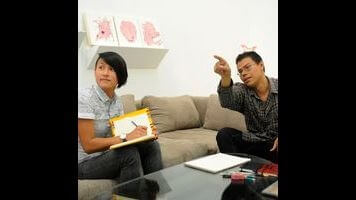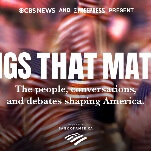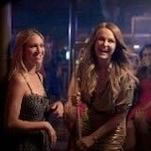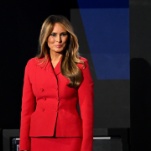Top Chef: “Getting Prickly In Mexico”

Watching reality TV is a little like wrestling with the question of whether or not you believe in predestination. (Stay with me here.) At one point in this week’s episode, Padma tells the rest of the judging panel that when distributing the envelopes carrying, for all intents and purposes, the chef’s fates in them (rather, which artist they were assigned to) she did so completely randomly, having no idea which chef would receive which artist. Which… seems like complete bullshit. It’s possible that Padma is telling the truth and the chefs were paired with artists randomly but given the not very real atmosphere that is the world of reality television and how desperately the producers this season have been rooting around for anything resembling a storyline, to believe they’d allow something as critical as finale assignments to chance seems doubtful.
Consider, if you will, the fact that almost every artist/chef pairing in this first (of the three part?!) finale, seem pitch perfect. Doug, fresh off his triumphant run through Last Chance Kitchen, gets matched with a folksy woman who is essentially Tami Taylor as a grandmother, inspiring to dig deep into his classic Texas roots. Gregory gets paired with an artist who glorifies the worker of the field and whose work captures the darkness that so much of life is colored by, but also features a single ray of hope, a theme that resonates deeply in Gregory’s own history. Mei is paired with an eccentric artist full of life and vigor, whose energy is so colorful it’s barely content to stay on the canvas. Her efforts and presence bring a true smile to Mei’s face the likes of which we’ve rarely seen this season and the pairing seems to spark a joy in food that Mei seems to have struggled accessing before this. Even Melissa, whose connection to her artist was more tenuous, found value in letting go of her rigid, pre-planned style and doing something more spontaneous and freeing.
It was these precise pairings that made the episode such a joy to watch, because it allowed each chef shine, pushing them past their own limitations, and resulting in easily the best episode of the waning season. It’s a great episode when it comes down to a judge’s panel where there are no big mistakes, no errors in judgement. The best episodes of reality TV are when it’s an even playing field and it all comes down to talent.
That said, how much behind the scenes manipulation needs to take place to ensure a final showdown that is completely merit-based and how many of those decisions are based wholly on, you know, merit? While Dougie’s run through Last Chance Kitchen seemed inspired (or predictable, I suppose, depending on how you feel about him) LCK is absolutely a way for the producers to have a level of quality control heading into the finale. The same goes for the artist envelopes. Sure Doug may have come up with a good dish based on Gregory’s artist and vice versa, but neither would have risen to something decidedly more inspired without those personal connections. Do you think that the season 12 Top Chef end game came about in a completely natural fashion or do you think that on TV, like in so much of life, perfection needs a little background assistance? And ultimately, does it even matter?
Either way, this is an episode of Top Chef to remember. As we saw on last week’s LCK the three remaining chefs arrive at their Mexican villa to find the final Last Chance Kitchen showdown taking place on the roof. As we suspected, Doug edged out George to move into the final four, despite neither dish yielding any criticism whatsoever. George is dismissed with very little fanfare and the (now four) remaining chefs head over to a local church to meet Padma and get into the final Quickfire Challenge. With Padma is chef Enrique Olvera, who informs the contestants that they’ll be preparing a dish involving the most coveted prickly pear of all, the xoconostle. The prickly pear is vibrant and bright, and its taste is quite tart. The chefs all fall quickly into their work and take four distinct tacks when it comes to tackling the key ingredient. Melissa decides to go with a ceviche and Mei, whose original instinct had been to use fish, settles for steak instead. Gregory opts to utilize the prickly pear in a relish to go with his shrimp and Doug goes bold and makes a vegetable stew, forgoing a protein altogether. It’s this nod to the primarily vegetable-based way of Mexican life that makes the greatest impression on the judges and Doug wins handily.
This victory means that (as Padma loves to say) Doug gets a very important advantage when it comes to the Elimination Challenge. As mentioned previously, the chefs have to create a dish inspired by a piece of new artwork by a local artist, with whom they’ll work together to create an integrated vision between dish and painting. Because the chefs are serving their dish at a party for 150 people, they also get to choose two sous chefs from previously eliminated contestants. Dougie’s advantage then, is that he gets to choose first. He opts for Adam and Katsuji, while Melissa ends up with George and James (Sorry. Swayze.), Mei chooses Rebecca and Kerianne, and Gregory picks Katie and Stacy. Aaron (the asshole), Ron, and Joy remain unchosen and are informed they can go pound sand.
The chefs depart to meet their (totally random) artists and are generally pleased with what they find. Doug is charmed by Merry Calderoni, former art teacher, like his mother, whose vision is to use the colors and textures of the walls of the Mexican pyramids in her piece. Gregory is similarly inspired when he meets Artemio Sepúlveda, an expressionist who chooses dark earth tones and focuses on depicting country people because of their connection to creation. Mei seems to have a surprising kinship with her artist, Béa Aaronson, whose colorful, loud art is life-inspired and encompasses the animal spirit, something that Mei keys in on. Melissa has a tougher time with Leonardo Díaz, whose work is graffiti-like and lovely, but works in a palette of colors difficult to recreate on the plate. His plans are nebulous and fluid, two things that don’t always translate well to the kitchen, but Melissa is determined to do it well all the same.








































